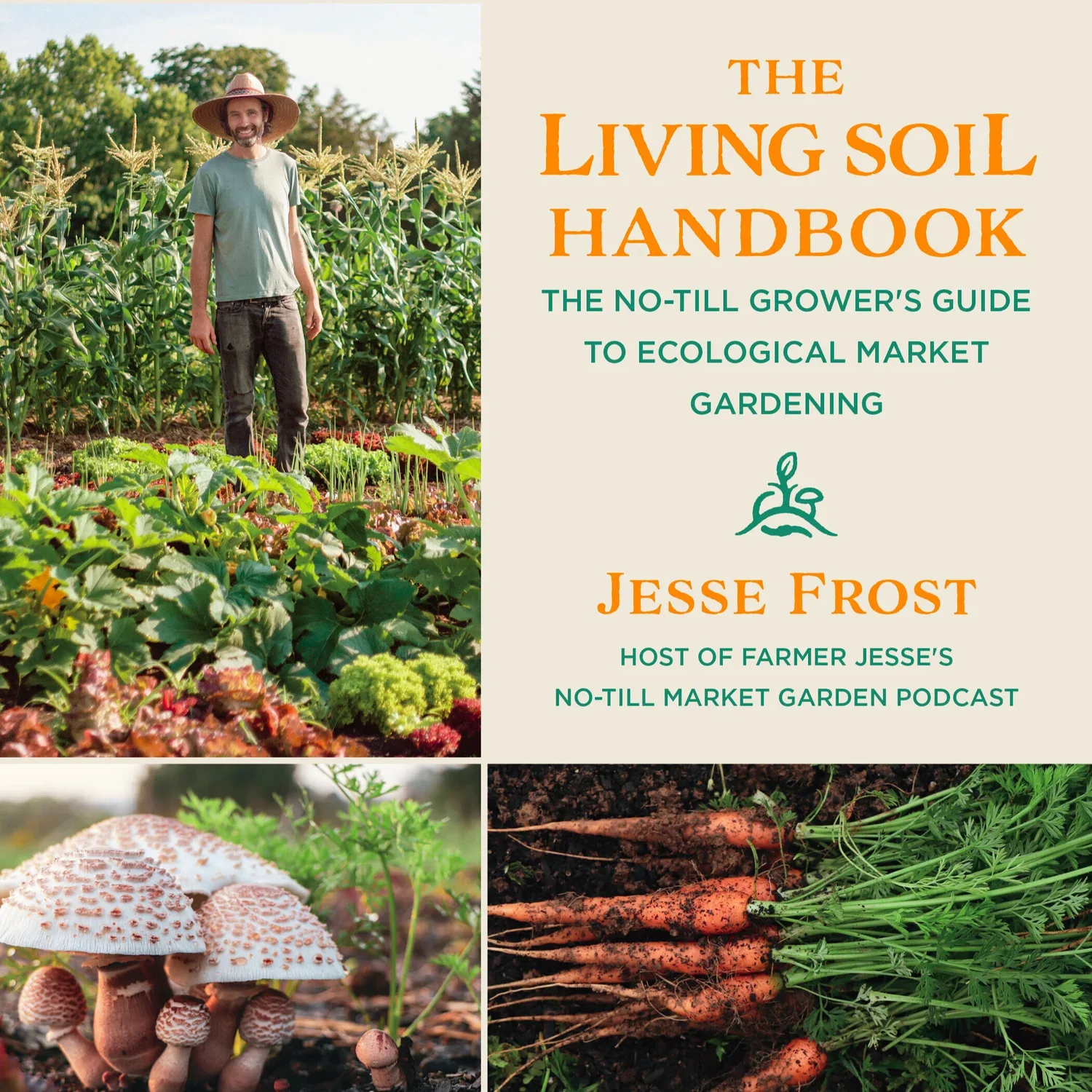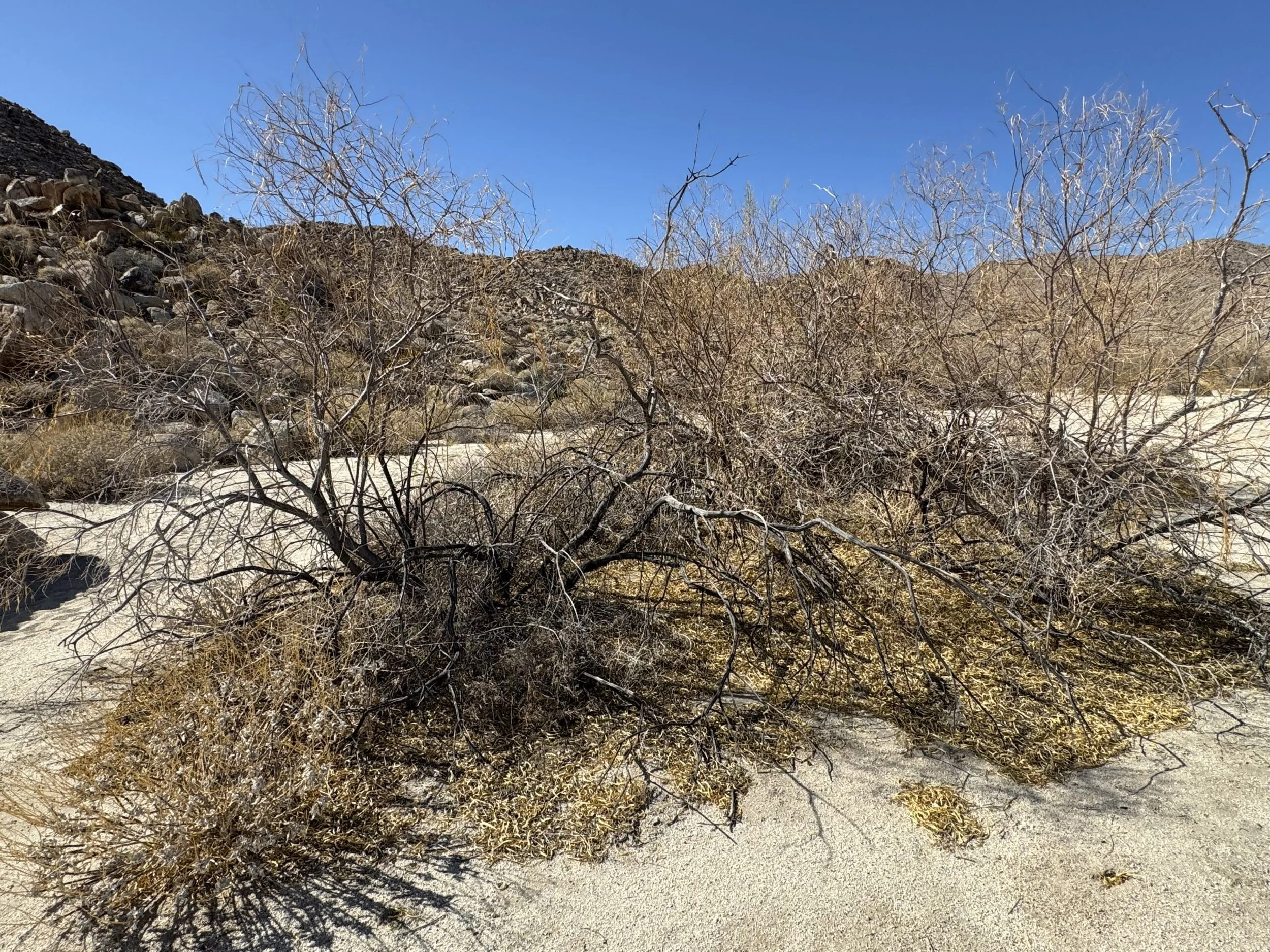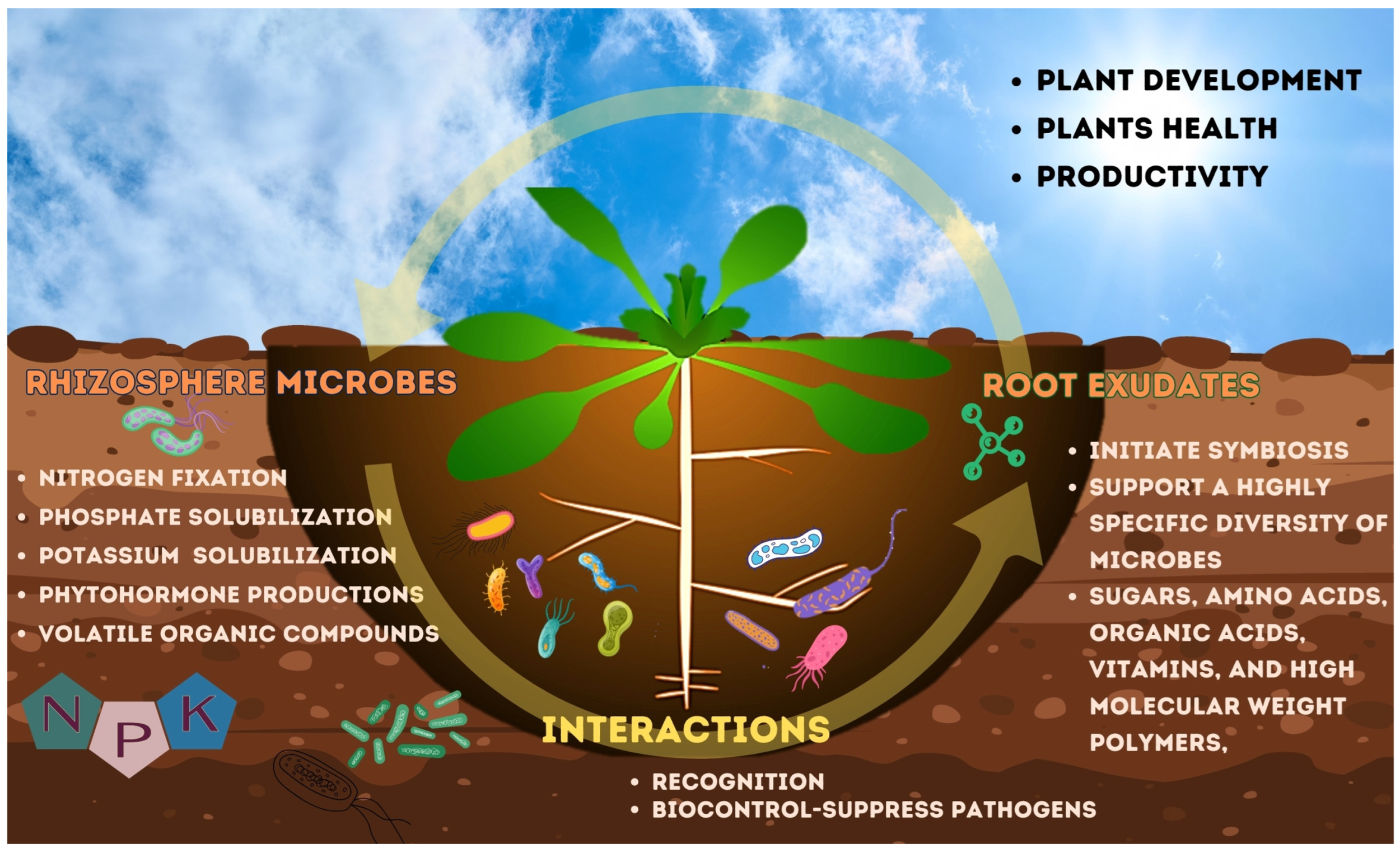3 Principles to Healthy Living Soil
Keep it Quiet • Keep it Covered • Keep it Planted
I’ve chosen these three shortened guidelines to make this concept as catchy and sticky as possible. They’re inspired by farmer Jesse Frost’s The Living Soil Handbook, a critical read for anyone looking to actually turn a profit from regenerative farming—or have healthy gardens, especially in a desert.
Conventional agricultural practices and the plague of modern landscaping has cost us over 30% of the world’s topsoils, and films like Kiss the Ground and Common Ground have done an excellent job of explaining just how essential living soil is to a healthy Earth, its atmosphere, and every creature that lives here—us included. If we want to survive, we need to rebuild topsoil—fast.
Let’s unpack Farmer Jesse’s three original principles and see how they apply to landscaping.
1) Disturb the soil as little as possible
Soil is an endlessly intricate, deceivingly delicate web of bacterial, fungal, plant & animal life all playing their parts in God’s greatest orchestra. In fact, here’s a paraphrased joke from Sadhguru, the founder of the Save Soil movement:
A group of human scientists approach God.
“God, we don’t need you anymore. We’ve figured out how to do everything you do.”
“Oh,” God replied. “Is that so? Show me what you can do.”
The scientists take a handful of soil and mold it into the rough shape of a baby. A few moments later, a healthy living human newborn baby blinks up at them.
“Very impressive,” God grants. “But first… get your own soil.”
I love using this story to remind people of the sacredness and divinity of soil. Every human being who has ever lived has come from, and returned to, the top 15 inches of topsoil on Earth.
Of the three principles, this first one has been least affected by modern conventional landscaping. It’s not like landscapers are out there tilling up lawns and gravel yards. But, there is still an obvious lack of understanding and respect of soil in the $175 billion/year U.S. landscaping industry.
Interview as many landscapers as you want—I bet you can’t find one company that spontaneously educates you on the benefits of undisturbed soil. That’s what we’re changing.
If we want to end the plague of haboobs (dry monsoons or dust storms) in the Phoenix area, we need to disturb our soil as little as possible.
2) Keep the soil covered as much as possible
Covering the soil is critical to keep its temperature & humidity levels stable, which keep the microbes and fungal systems alive. We call this mulching, and proper mulching prevents evaporation—the process by which water returns to vapor directly, and soil dries out into dirt that cannot support the living creatures it once could.
© Tree of Life Nursery: “Desert willow, Chilopsis linearis in a desert wash. Notice the beautiful top dress “mulch” as the plant drops its own leaves which accumulate over its own root zone.”
Some people with a keen eye and sharp mind like to point out that, in places like our beautiful Sonoran Desert, there is no mulch on the soil. Who are we to change that?
I generally agree that we have no business going around the desert putting woodchips everywhere. But I do remind those folks that the desert absolutely mulches itself—look under any mesquite bosque, under the canopy of any palo verde, ironwood, desert willow, and other Sonoran Desert plants.
Where there is leaf drop, there is mulch.
If we want to water less in droughts and deserts, we must mulch with organic materials* as much as possible.
(*Although technically rocks fit the definition of a mulch, they are far less effective at protecting soil in arid regions.)
3) Keep the soil planted as much as possible
Planting the right plants, in the right places and combinations, at the right times, is the third and final key to healthy living soil that cleans the air and feeds us nutrient-rich foods.
That’s because living roots in the soil are necessary to the fascinating exchange of minerals and carbohydrates that takes place between plants and microbes: plants convert sunlight into exudates like sugars and amino acids, and trade them for minerals and elements, as well as additional water access and disease protection. It’s a truly miraculous system.
Image credit Wannaporn Thepbandit & Dusit Athinuwat on MDPI
As Ray Archuleta loves to remind us, we want the water to leave through a living plant. That’s called transpiration, and it’s responsible for almost half of all terrestrial precipitation. The more plants a region has, the more rainfall that region sees.
If we want to increase rainfall in areas such as the Phoenix Valley, we should be planting as much as possible.
How can you explain these soil health principles in terms of God?
Though I’m not specifically religious myself, I am deeply spiritual. And whenever I work with people who have a relationship with God, I love to reference the indie documentary Back to Eden to teach about this topic.
The subject of the film, Paul Gautschi, shares his story of turning to God during a drought, and desperately asking for help tending his vegetable garden without irrigation. God replies: “Turn around and look at your trees.”
Gautschi is led to the thriving floor of the forest he planted decades ago, and has his eyes opened by the moisture and richness of the topsoil there.
“When God designed the landscape project for Planet Earth, He was so genius: He designed it in such a way He would never have to show up to work. It is completed self-sustained.”
Ready to champion soil?
Now that you understand the full power and beauty of these three principles of healthy living soil, I hope you’ll join the growing movement of soil champions fighting to rebuild our lost topsoil—not just on agricultural land, but also in urban & suburban environments where construction and development have destroyed entire ecosystems.
Some say we have 60 years of topsoil left. In food-growing terms, that’s 60 harvests. Let’s get to work building soil everywhere we can, and avoid a tragic breakdown of civilization.






